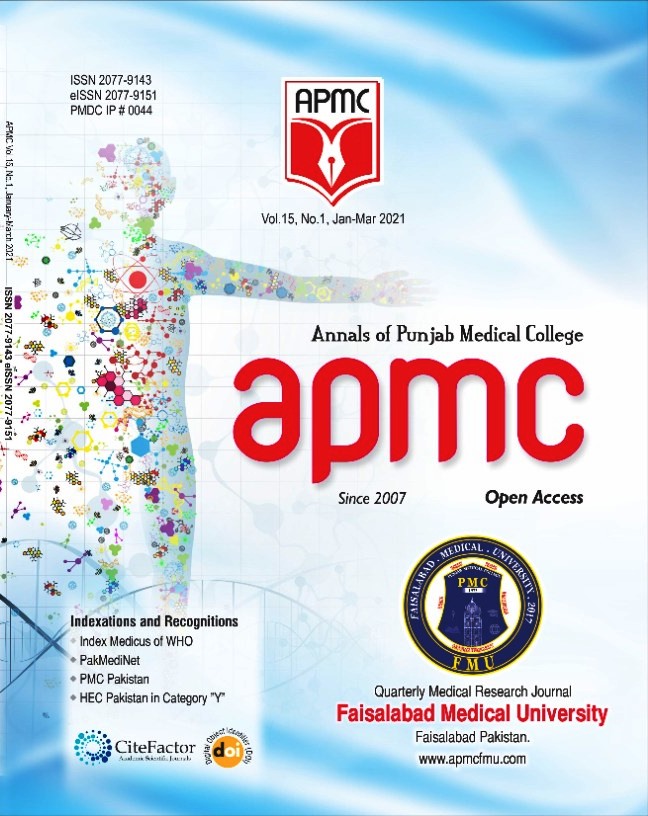Antenatal Complications in Grand Multipara Presented at Tertiary Care Hospital
Abstract
Background: Grand multiparity considered as a risk factor of obstetrics because of the recorded complications linked to the condition. Grand multiparity typically considered as the distinctive reason for the raised, maternal and fetal morbidity and mortality because of expanded incidence of adverse outcome during pregnancy and birth. Objective: To determine frequency of antenatal complications in grand multipara. Study Design: Cross-sectional study. Settings: Department of Obstetrics and Gynecology, Jinnah Postgraduate Medical Centre, Karachi Pakistan. Duration: Study duration was six months from March 2016 September 2016. Methodology: Total 212 patients were included in this study. Anemia was taken as Hb of 11g/dl, PIH was taken as BP of >140/90mmHg after 20 weeks of gestation with or without proteinuria on two or more occasion 6 hours apart and placenta previa was confirmed via ultrasonography. All the information was collected via study proforma. Results: Patients mean age was 34.90±3.51 years. Most of the patients 96.7% had parity 5-9. Anemia was found 69.8% and pregnancy induced hypertension was 22.2%, while placenta previa was found to be 18.9%. Antenatal complications including anemia, pregnancy induced hypertension and placenta previa were found to be statistically insignificant according to age, parity and BMI, (p->0.05). Conclusion: Most common antenatal complication in this study was anemia followed by hypertension and placenta previa. Grand multiparity is at a greater risk of antenatal complications.

 This work is licensed under a
This work is licensed under a 